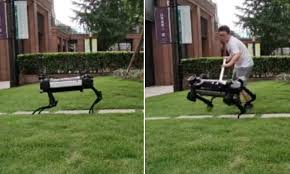
Breaking News
 DoJ Sues Four More States for Failing To Produce Voter-roll Data
DoJ Sues Four More States for Failing To Produce Voter-roll Data
 World's Largest Aviation Giant Abandons Google Over Security Concerns
World's Largest Aviation Giant Abandons Google Over Security Concerns
 41 Members of Congress Demand DOJ Halt Gun Control Defense in Fiery Letter
41 Members of Congress Demand DOJ Halt Gun Control Defense in Fiery Letter
 'A Lie And Propaganda': Gabbard Fact-Checks Reuters' Russia Scaremongering In Real Time
'A Lie And Propaganda': Gabbard Fact-Checks Reuters' Russia Scaremongering In Real Time
Top Tech News
 Perfect Aircrete, Kitchen Ingredients.
Perfect Aircrete, Kitchen Ingredients.
 Futuristic pixel-raising display lets you feel what's onscreen
Futuristic pixel-raising display lets you feel what's onscreen
 Cutting-Edge Facility Generates Pure Water and Hydrogen Fuel from Seawater for Mere Pennies
Cutting-Edge Facility Generates Pure Water and Hydrogen Fuel from Seawater for Mere Pennies
 This tiny dev board is packed with features for ambitious makers
This tiny dev board is packed with features for ambitious makers
 Scientists Discover Gel to Regrow Tooth Enamel
Scientists Discover Gel to Regrow Tooth Enamel
 Vitamin C and Dandelion Root Killing Cancer Cells -- as Former CDC Director Calls for COVID-19...
Vitamin C and Dandelion Root Killing Cancer Cells -- as Former CDC Director Calls for COVID-19...
 Galactic Brain: US firm plans space-based data centers, power grid to challenge China
Galactic Brain: US firm plans space-based data centers, power grid to challenge China
 A microbial cleanup for glyphosate just earned a patent. Here's why that matters
A microbial cleanup for glyphosate just earned a patent. Here's why that matters
 Japan Breaks Internet Speed Record with 5 Million Times Faster Data Transfer
Japan Breaks Internet Speed Record with 5 Million Times Faster Data Transfer
Watch a Robot Dog Learn How to Deftly Fend Off a Human

STUDY HARD ENOUGH, kids, and maybe one day you'll grow up to be a professional robot fighter. A few years ago, Boston Dynamics set the standard for the field by having people wielding hockey sticks try to keep Spot the quadrupedal robot from opening a door. Previously, in 2015, the far-out federal research agency Darpa hosted a challenge in which it forced clumsy humanoid robots to embarrass themselves on an obstacle course way outside the machines' league. (I once asked you, dear readers, to stop laughing at them, but have since changed my mind.) And now, behold: The makers of the Jueying robot dog have taught it a fascinating way to fend off a human antagonizer who kicks it over or pushes it with a stick.
A team of researchers from China's Zhejiang University—where the Jueying's hardware was also developed—and the University of Edinburgh didn't teach the Jueying how to recover after an assault, so much as they let the robot figure it out. It's a dramatic departure from how a hardware developer like Boston Dynamics goes about teaching a robot how to move, using decades of human experience to hard code, line by line, the way a robot is supposed to react to stimuli like, um, a person's foot.

 Advanced Propulsion Resources Part 1 of 2
Advanced Propulsion Resources Part 1 of 2

